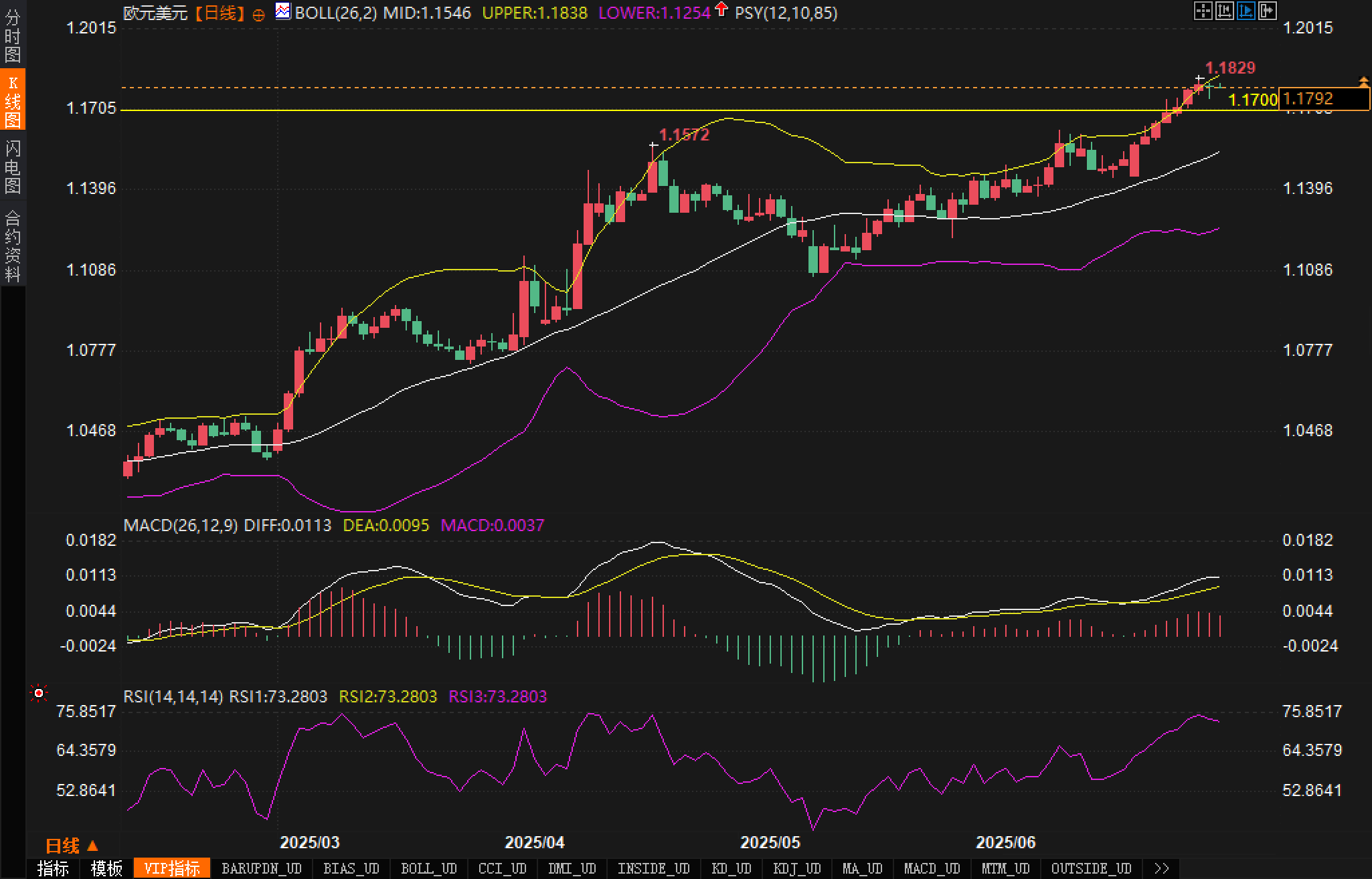Non-farm payrolls coming + ECB verbal intervention: Will the euro's rise take a break?
2025-07-03 17:50:17

From a fundamental perspective, the ECB has a split attitude towards the appreciation of the euro. On the one hand, Vice President Guindos pointed out that if the euro breaks through 1.20, the situation may become "more complicated", while Smukus also reminded that the appreciation speed of the euro should be closely monitored; on the other hand, Centeno and Mueller are relatively optimistic, believing that the current level reflects the resilience of the eurozone's fundamentals, and emphasize that the increasing interest of international investors in euro asset allocation will help enhance the international status of the euro.
In the United States, the ADP data for June unexpectedly turned negative, with private sector employment recording a contraction of 33,000, far below the market's expected growth of 95,000, marking the first negative growth since the outbreak. The market is concerned about the upcoming non-farm payrolls data for June. The market currently expects non-farm payrolls to grow by 110,000. Analysts believe that if the actual value is significantly lower than 80,000, it is not ruled out that the US dollar will face selling pressure again, reinforcing expectations that the Federal Reserve will cut interest rates in July or September. In addition, the continued pressure from the US President on the remarks of Federal Reserve Chairman Powell has also weakened the safe-haven appeal of the US dollar. Overall, in the short term, there is still support for the euro, but the change in the central bank's tone also reminds the market to be wary of the policy risks brought about by a too-rapid increase in the exchange rate.
Technical aspects:
From the daily chart, the EUR/USD is generally in an upward channel, the Bollinger Bands continue to open, the Bollinger Middle Track (MID) 1.1546 moves up, and the current K-line is close to the Bollinger Upper Track (UPPER) 1.1838 near the pressure zone. Recently, the exchange rate has accelerated from 1.1572 to the latest high at 1.1829, but then encountered resistance and fell back, suggesting that there is short-term selling pressure above.

From the perspective of MACD indicator, the MACD line and the signal line (DEA) are still above the 0 axis, indicating that the upward momentum of the trend has not been destroyed. Although the MACD histogram shows slight signs of convergence, it is still in the positive range. We will pay attention to whether the histogram can continue to expand to support the upward price.
The relative strength index (RSI) is running at 73.28, which has entered the overbought range and has shown signs of falling back, indicating that short-term bullish forces may need to be corrected. Analysts believe that if the market fails to effectively break through and stabilize the 1.1820-1.1830 range, the technical retracement pressure cannot be ignored. The support level below focuses on the 1.1700 psychological level and the 1.1630 line. If it falls below the 21-day simple moving average support (about 1.1550), it may trigger a deeper correction.
Market sentiment observation
The current market sentiment remains bullish. Eurozone economic data showed a slight improvement, with the final value of the service industry PMI in June revised up to 50.5, returning to above the boom-bust line again, boosting market expectations for economic stabilization. At the same time, the uncertainty of the Fed's policy direction and the outlook for the labor market has limited the strength of the dollar's rebound. The market still bets on a rate cut for the medium-term outlook of the dollar, driving euro bullish sentiment to maintain a high level. However, from the perspective of traders, the euro has risen rapidly recently, and some short-term bulls have chosen to lock in profits before important technical barriers. Coupled with the differentiated verbal intervention of central bank officials, the market has been consolidating at a high level. The market mentality may tend to be cautious before the non-agricultural data, and the short-term may be a narrow range of fluctuations to digest the previous gains.
Outlook
Bullish Outlook: Analysts believe that if the non-agricultural data is significantly lower than expected, the US dollar may face a new round of selling pressure. If the technical side effectively breaks through the 1.1829 high and stabilizes above the upper track of the Bollinger Band, the euro is expected to further test the 1.1900-1.1910 resistance zone, which will be the new focus of the bulls. If it breaks through strongly and stabilizes in this range, it may challenge the psychological barrier of 1.20 in the future. Although this price may trigger more explicit verbal intervention from the European Central Bank, it is necessary to guard against the risk of "false breakthrough" and retracement.
Short-term outlook: Analysts believe that if non-agricultural data is better than market expectations or the euro rises too fast in the short term, triggering more European Central Bank officials to release "warning" signals, the exchange rate may encounter resistance and pullback at high levels. At that time, 1.1700 and 1.1630 will constitute key support. If it breaks below the 21-day simple moving average support level of 1.1550, it may trigger short-term profit-taking and technical selling pressure, pushing the exchange rate to test lower retracement targets and enter a more obvious consolidation market stage.
- Risk Warning and Disclaimer
- The market involves risk, and trading may not be suitable for all investors. This article is for reference only and does not constitute personal investment advice, nor does it take into account certain users’ specific investment objectives, financial situation, or other needs. Any investment decisions made based on this information are at your own risk.










